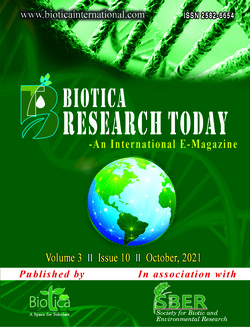
Hidden Hunger Crisis and Biofortification
Merentoshi*
Dept. of Genetics and Plant Breeding, School of Agricultural Sciences and Rural Development (SASRD), Nagaland University, Medziphema, Nagaland (797 106), India
Ranjan Das
Dept. of Crop Physiology, Assam Agricultural University, Jorhat, Assam (785 013), India
DOI: NIL
Keywords: Biofortification, Hidden hunger, Micronutrients, Nutrition
Abstract
Micronutrient deficiency is a serious global health problem that affects one out of every three persons. Agricultural products are the primary source of nutrients for humans, especially in developing countries. These nutrient deficient agricultural products cannot support healthy diet in order to meet daily requirements resulting in poor health, sickness, increased morbidity and mortality rates. Biofortifying the crops consumed by the poor population of the world can considerably improve the amount of nutrients consumed by these populations. Despite numerous challenges and the potential extent of biofortification's impact on population nutritional status may be small biofortified crops have been recognized as a viable and cost-effective agricultural approach for improving the nutritional status of tens of millions of people on a sustainable basis.
Downloads
not found
Reference
FAO, 2013. The State of Food and Agriculture, Food and Agriculture Organisation. Rome.
Welch, R.M., Graham, R.D., 2004. Breeding for micronutrients in staple food crops from a human nutrition perspective. J. Exp. Bot. 55, 353-364.
WHO, 2021. Global Anaemia estimates, 2021 Edition.
